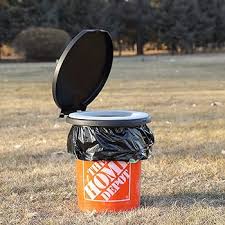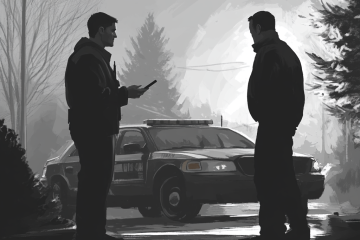
5 gallon toilet for emergencies
The 5-Gallon Emergency Toilet System: A Vital Prep You Hope to Never Need
Let’s talk about something nobody wants to discuss but everyone needs to plan for: what happens when the plumbing stops working. Whether it’s a natural disaster, grid-down situation, or that renovation that’s taking way longer than the contractor promised, having a backup bathroom plan isn’t just smart – it’s essential. Today, we’re going to explore how to turn a simple 5-gallon bucket into a sustainable emergency toilet system that won’t turn your home into a biohazard zone.
First, let’s address the elephant in the room – yes, we’re talking about poop. It’s not glamorous, but neither is trying to figure this out in the middle of an emergency. Think of this as insurance for your dignity. When the water stops flowing, you’ll be glad you planned ahead instead of trying to recreate scenes from camping trips gone wrong.
The beauty of this system lies in its simplicity. At its core, you need a clean 5-gallon bucket, a toilet seat designed for buckets (though we’ll discuss alternatives), and some basic supplies you probably already have. The real magic happens in how you manage it, and that’s where most emergency toilet plans fall short. Anyone can sit on a bucket; maintaining a sanitary system that doesn’t smell like a medieval street takes some knowledge.
Let’s start with the basic setup. Your foundation is a sturdy 5-gallon bucket – and no, not the one you use for car washing. You want one dedicated to this purpose, preferably new. The heavier construction of a food-grade bucket is ideal because the last thing you need is structural failure at the worst possible moment. If you’ve ever had a cheap plastic chair give way, you understand the importance of quality here.
The seat situation deserves serious consideration. While commercial bucket toilet seats are available (and recommended), you can create a serviceable setup using a regular toilet seat with some creative mounting. The key is stability – what engineers call the “wobble factor.” You want zero wobble. A unstable toilet seat is like a rookie tightrope walker – entertaining to think about but terrifying in practice.
For the critical part that makes this system actually usable: odor control. Your first line of defense is proper layering in your bag. Start with about two inches of sawdust, pine shavings, or peat moss in the bottom – and make absolutely sure your cover material is completely dry. After each use, add enough cover material to completely bury the evidence. Think of it like making lasagna, except this is a lasagna you definitely don’t want to eat.
For enhanced odor fighting power, you have several proven options you can add to your cover material. Activated charcoal is incredibly effective at absorbing odors rather than just masking them – sprinkle a thin layer in with your cover material or keep some in a breathable cloth bag near your bucket. A light dusting of diatomaceous earth between layers not only helps with odors but also discourages any unwanted insect activity. Baking soda, that humble kitchen staple, can be mixed into your cover material (about one cup per gallon of sawdust or other cover material) for additional odor control. For those who want an extra level of odor management, a few drops of pine or cedar essential oils added to your dry cover material can help – but remember, these mask odors rather than eliminate them, so they should be used in addition to, not instead of, proper covering practices.

Use a mixture of sawdust, pine needles and leaves to fight odors
Preventing bag slippage is crucial for maintaining sanity and sanitation. The worst possible scenario is having your bag slip mid-use – a disaster that ranks somewhere between “zombie apocalypse” and “mother-in-law moving in permanently.” To prevent this, fold the bag over the rim of the bucket with at least a 6-inch overlap. Here’s a pro tip: use two large rubber bands or a bungee cord to secure the bag around the outside of the bucket. If you’re using a snap-on toilet seat, place the rubber bands below where the seat attaches for extra security.
When it comes to removal and sealing of full bags, technique matters more than brute force. Never fill the bag more than halfway – this gives you plenty of material to properly seal it and makes handling much safer. When it’s time to change bags, add a final generous layer of cover material, then carefully gather the bag’s excess material while avoiding creating air pockets. Twist the top portion tightly, then fold it over and secure with a strong zip tie or sturdy tape. For extra security (and peace of mind), double-bag it before final disposal.
The disposal process requires careful consideration. If you’re in a true grid-down situation, you’ll need a dedicated disposal area far from water sources and food production areas. We’re talking at least 200 feet from water sources and downhill from everything. Mark your calendar for 12 months from when you start a disposal pile – that’s your minimum waiting period before even thinking about using it for non-food plants.
Maintenance is straightforward but non-negotiable. Keep extra bags and plenty of cover material on hand. Clean the bucket thoroughly between bag changes using bleach water or another disinfectant. Store your cover material in a separate sealed container where it stays dry and rodent-free. Think of it like maintaining your car – regular attention prevents catastrophic failures.
For indoor use, consider placing activated charcoal or zeolite near your bucket – both are excellent at absorbing odors without adding chemicals to the air. A small container of coffee grounds can also work wonders, plus it gives you an excuse for hoarding more coffee (as if we needed one).
Here’s a prep most people forget: practice using your system before you need it. Not just the setup – the whole process. It’s like a fire drill for your bathroom backup plan. Yes, it feels weird, but not as weird as trying to figure it out during an actual emergency while your family watches and offers helpful commentary.
Remember: This system isn’t just for end-of-the-world scenarios. Natural disasters, plumbing repairs, or even camping trips can all benefit from having a reliable, sanitary toilet solution ready to go. Think of it as peace of mind in a bucket – not glamorous, but invaluable when you need it.


